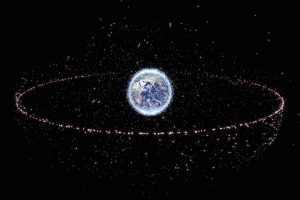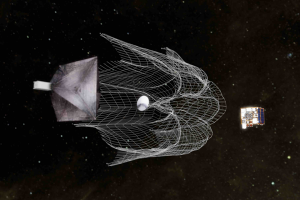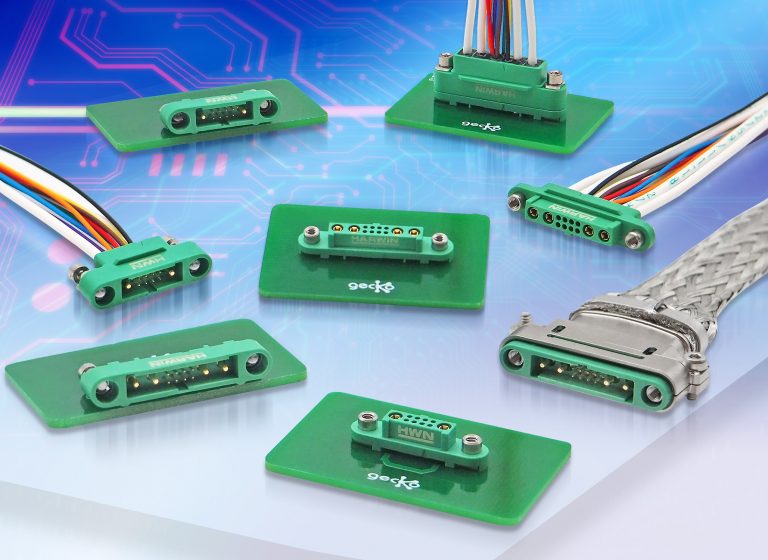Space Junk: Clearing a path through the maelstrom
The existence of thousands of tonnes of floating space junk orbiting Earth is a growing problem for space agencies and research organisations such as NASA, ISRO and ESA. Now nearing the 7000-tonne mark, the race is on to develop an effective means of removing this human-generated debris and minimise its threat to the advancement of space exploration.
What is space junk?
Comprising a vast mass of obsolete, broken objects and fragments, space debris is made up of the remains of old satellites and spent rocket stages, as well as the immeasurable shards and splinters produced following disintegration, erosion and collisions.
This wreckage poses a significant threat to the safety and structural integrity of spacecraft and satellites; and with speeds of up to 35,000mph, even the tiniest slivers of metal have the potential to cause serious damage. With concerns mounting, scientists across the many agencies and organisations agree that a solution needs to be found urgently in order to safeguard our interests in space.

What is the scale of the space junk problem?
With estimates of some 700,000 objects measuring greater than 1cm in size presently in orbit, together with the high velocities at which they are travelling, the potential for collisions is very real.
At present, over 20,000 objects are being monitored by NASA, working with the US Department of Defence to track the position and trajectory of pieces of space junk, although they face significant difficulties in tracking anything other than the larger pieces of debris. Indeed, as a case in point, recent examples of satellites being hit by objects of a size too small to be monitored, resulting in damage, bring the hazards into sharp focus.
The problem is unlikely to ease any time soon, with the amount of space junk orbiting Earth set to proliferate, increasing the probability of collisions further, and, in turn, generating yet more orbiting trash; and so the cycle continues.
This not-so-empty void of space is set to get even busier since the satellite-building industry has seen a considerable drop in manufacturing costs in recent times. A move that will see the construction of mega-constellations of satellites and, with it, the deployment of thousands of new satellites into low-Earth orbit in the near future, escalating yet further the number of targets for fast-moving space debris.
Capturing and safely removing space junk
However, various systems and devices are being developed and tested that may well be about to tip the balance back in our favour. RemoveDebris is a project devised to test a range of potential debris removal systems in space, tackling the growing risk of space junk head-on, within the actual environment.
The project involves an international consortium, with financial backing from the European Commission, led by the Surrey Space Centre (SSC) that includes aerospace manufacturer Airbus, together with leading research and industrial institutions from France, Switzerland and South Africa, and is embarking upon a comprehensive evaluation of a variety of methods and novel technologies to capture and safely dispose of items of floating space junk.
A simple but effective solution
The deceptively simple concept of positioning a large net to trap and draw in debris is one proposed technique being explored by the consortium. Like a large fishing net, it will be deployed by a satellite launched from a ‘mothership’. Likewise, again using the fishing analogy, harpoons are being considered as a way to tether larger items.
Once captured, the harpooned or netted junk objects, would be dragged back down towards Earth by the mothership and deorbited, to be burned up in the atmosphere upon re-entry.

A giant net is fired at a SSC CubeSat acting as artificial space junk in the RemoveDebris project
During the testing process, the SSC’s miniature satellites, called CubeSats, will be used as artificial space junk to be captured by the nets and harpoons. The conclusions of the RemoveDebris project will be invaluable in informing the long-term advancement of space exploration. Ultimately, it paves the way for safer spaceflight, providing some defence to satellites and orbiting space stations from the hazards of structural damage and risk to life that fast-moving space debris presents.
Overcoming the obstacles to working in space
Working in space poses unique challenges. The harsh operational conditions beyond Earth’s orbit can be unpredictable and extreme, meaning that all satellite and spacecraft technology needs to be exceptionally robust, built to withstand the impact of launch, together with exposure to extremes of temperature, shock and vibration. In addition, the extra complexities of incorporating SSC’s ultra-compact CubeSats within the project highlight the intricacy and magnitude of the engineering challenges involved in identifying the most appropriate constituent components.
Cutting edge CubeSat technology
For the past six years, high-reliability connector supplier Harwin has been working with SSC on the development of its cutting-edge CubeSat technology, providing it with its highly advanced Gecko range of connectivity components. These connectors display the ruggedness required to maintain continuing operational reliability in harsh environments, as well as being small and lightweight enough for SSC’s specific requirements.
The RemoveDebris project will be heading to the International Space Station on board a SpaceX rocket sometime this year, ready to begin its in-space testing. As such, it becomes the first mission of its kind to test debris removal technology in space and carries with it our hopes and aspirations for a safer, less cluttered future for space exploration.
Uh oh, it looks like you are using an outdated browser version.
Some functions may not work as expected on Harwin.com in your current browser. For the best experience, more security and speed, we recommend updating your browser to the latest version.
(if you are using Internet Explorer, we recommend switching to an alternative browser.)
Still having issue? Contact [email protected] for help.



